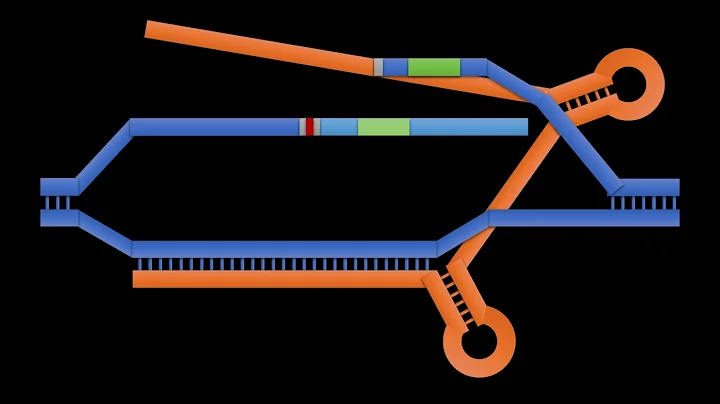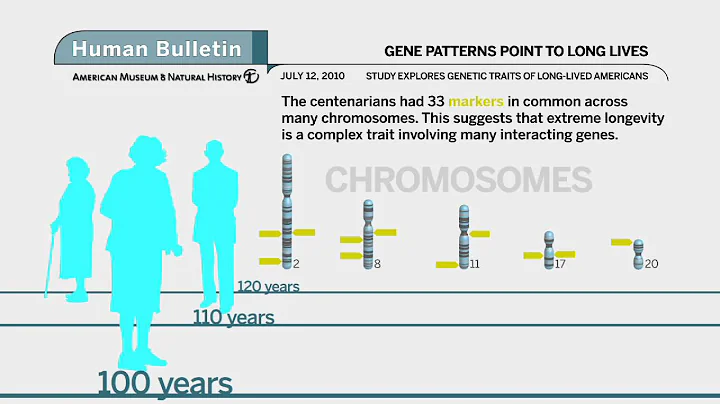On June 28, 2012, Science magazine published a paper online: A Programmable Dual-RNA–Guided DNA Endonuclease in Adaptive Bacterial Immunity, [1] announcing this gene editing in the fields of life sciences and medicine. The CRISPR-Cas gene editing technology of the revolution was born. (Figure 1)
In the following 10 years, CRISPR-Cas gene editing technology has been continuously developed and improved by scientists around the world, and has been applied to many fields such as disease treatment, crop breeding, and functional genome research. The two pioneers of this technology, JENNIFER A. DOUDNA and EMMANUELLE CHARPENTIER, also won the Nobel Prize in Chemistry in 2020 in recognition of their outstanding contributions to the discovery and development of CRISPR-Cas gene editing technology.
![On June 28, 2012, Science magazine published a paper online: A Programmable Dual-RNA–Guided DNA Endonuclease in Adaptive Bacterial Immunity, [1] announcing this gene editing revolution in the fields of life sciences and medicine. wave - DayDayNews](https://cdn-dd.lujuba.top/img/loading.gif)
Figure 1: Science reports CRISPR gene editing technology
This year is the 10th year since the advent of CRISPR-Cas gene editing technology. So what changes and applications has this technology brought to the scientific community and humans? Using the Web of Science tool to search CRISPR-related literature, we found that there were only sporadic research reports on bacterial CRISPR sequences before 2012.
Since 2012, research on CRISPR-Cas gene editing technology has been reported by major journals at a spurt of speed. Among them, University of California system, Harvard University and Chinese Academy of Sciences are among the top three research institutions with the largest research output on CRISPR gene editing technology. (Figure 2)
![On June 28, 2012, Science magazine published a paper online: A Programmable Dual-RNA–Guided DNA Endonuclease in Adaptive Bacterial Immunity, [1] announcing this gene editing revolution in the fields of life sciences and medicine. wave - DayDayNews](https://cdn-dd.lujuba.top/img/loading.gif)
Figure 2: Web of Science search results of CRISPR literature can be viewed
CRISPR-Cas gene editing technology
With the continuous development of life science research, especially gene sequencing technology, gene editing technology has gradually become a powerful tool for basic scientific research. tool. Among them, the development of CRISPR-Cas9 gene editing technology has gradually become the third technology after zinc finger endonuclease (ZFN) and transcription activator-like effector nuclease (TALEN) due to its low cost, easy operation and high efficiency. Modern genome editing technology is widely used in the field of gene editing.
The CRISPR-Cas system was first discovered in bacteria and archaea . It is an adaptive immune defense mechanism formed during the long-term evolution of bacteria to fight against invading viruses and foreign DNA. This system was actually discovered by Spanish microbiologist Francisco Mojica as early as 2003. He proposed that an immune mechanism was widespread among bacteria and archaea, but this discovery did not attract people's attention at the time. Therefore, after a long and painful rejection of manuscripts (from Nature, PNAS to NAR, all were cruelly rejected), this research was finally published in the Journal of Molecular Evolution. CRISPR (Clustered Regularly Interspaced Short Palindromic Repeats) also entered people's field of vision for the first time.
![On June 28, 2012, Science magazine published a paper online: A Programmable Dual-RNA–Guided DNA Endonuclease in Adaptive Bacterial Immunity, [1] announcing this gene editing revolution in the fields of life sciences and medicine. wave - DayDayNews](https://cdn-dd.lujuba.top/img/loading.gif)
Figure 3: CRISPR-Cas research timeline [2]
On February 15, 2013, Zhang Feng and others successfully applied CRISPR-Cas9 technology to gene editing of mammalian and human cells. After that, the famous patent dispute between Zhang Feng and DOUDNA, CHARPENTIER and others also occurred. In the end, Zhang Feng legally obtained the patent rights for CRISPR-Cas9 technology. However, the three people's contributions to this technology are also obvious to all, so they are also called the "CRISPR Big Three".
![On June 28, 2012, Science magazine published a paper online: A Programmable Dual-RNA–Guided DNA Endonuclease in Adaptive Bacterial Immunity, [1] announcing this gene editing revolution in the fields of life sciences and medicine. wave - DayDayNews](https://cdn-dd.lujuba.top/img/loading.gif)
Figure 4: The three CRISPR giants
With the continuous research by scientists around the world, tools such as CRISPR-Cas9, CRISPR-Cas3, and CRISPR-Cas12a have been developed one after another, and has also been derived from the leading editor Prime developed by Liu Ruqian and others. Editor etc. Among them, gene editing technology represented by CRISPR-Cas9 technology has gradually developed various functions, such as: DNA shearing, transcription activation (CRISPRa), transcription inhibition (CRISPRi), DNA methylation and demethylation, Histone modification, DNA base trans-editing, etc. As shown in Figure 5, the versatility of CRISPR-Cas9 is like a "Swiss Army Knife" of molecular biology research, promoting various basic scientific research.
![On June 28, 2012, Science magazine published a paper online: A Programmable Dual-RNA–Guided DNA Endonuclease in Adaptive Bacterial Immunity, [1] announcing this gene editing revolution in the fields of life sciences and medicine. wave - DayDayNews](https://cdn-dd.lujuba.top/img/loading.gif)
Figure 5: Illustration of the versatility of CRISPR-Cas9[3]
CRISPR gene editing to treat human diseases
"Nature" magazine once commented: "Since its inception, CRISPR gene editing technology has been touted as a game changer in the treatment of diseases. "But to make this dream a reality, the most critical thing is how to successfully introduce the CRISPR-cas9 tool into the human body and ensure that it can edit the target gene safely and effectively?
In June 2021, an article was published in "NEJM": CRISPR-Cas9 In Vivo Gene Editing for Transthyretin Amyloidosis, [4] This study conducted a clinical trial of gene editing in humans and used lipid nanoparticles (LNP) to deliver CRISPR-Cas9 And it targets liver cells to specifically silence the TTR gene, thereby treating transthyretin amyloidosis. (Figure 6) Study results showed that all participants experienced a decrease in malformed protein levels, with the two who received the high dose seeing an average 87% decrease in protein levels.
![On June 28, 2012, Science magazine published a paper online: A Programmable Dual-RNA–Guided DNA Endonuclease in Adaptive Bacterial Immunity, [1] announcing this gene editing revolution in the fields of life sciences and medicine. wave - DayDayNews](https://cdn-dd.lujuba.top/img/loading.gif)
Figure 6: CRISPR-Cas9 treatment of transthyretin amyloidosis
It is worth noting that this is the first clinical trial result of CRISPR gene editing therapy in vivo, which greatly expands the application scope of CRISPR gene editing therapy and treats many genetic diseases. treatment opens up new avenues.
In addition, the use of CRISPR-Cas9 technology to treat AIDS has also become a research direction that many scientific researchers are paying attention to. In 2019, Deng Hongkui research group, Chen Hu research group, and Chen Hu research group and Wu Hao research group also reported in NEJM that they used CRISPR-Cas9 technology to gene edit and modify the CCR5 gene in human adult hematopoietic stem cells to reconstruct the human body's hematopoietic system. . [5]
![On June 28, 2012, Science magazine published a paper online: A Programmable Dual-RNA–Guided DNA Endonuclease in Adaptive Bacterial Immunity, [1] announcing this gene editing revolution in the fields of life sciences and medicine. wave - DayDayNews](https://cdn-dd.lujuba.top/img/loading.gif)
Figure 7: "NEJM" reports the use of CRISPR-Cas9 technology to treat patients with AIDS and acute lymphoblastic leukemia
This research is the first in the world to use CRISPR/Cas9 gene editing technology to edit hematopoietic stem cells and transplant them into AIDS and acute lymphoblastic cells. Treatment of leukemia patients in vivo has initially proved the feasibility and safety of gene-edited hematopoietic stem cells in clinical applications.
Application of CRISPR technology in the field of emerging and emergent infectious diseases
With the continuous development of CRISPR gene editing technology, it has also demonstrated its excellent performance in the prevention and treatment of infectious diseases. In October 2019, MIT and Pardis C. Sabeti, Zhang Feng and others from the Broad Institute of Harvard University published a research paper in "Molecular Cell": Programmable Inhibition and Detection of RNA Viruses Using Cas13. [6]
This study used the antiviral activity of Cas13 for RNA virus detection and established a powerful and rapidly programmable diagnostic and antiviral system named CARVER. Later, in response to the sudden COVID-19 epidemic, the nucleic acid detection system SHERLOCK developed by Zhang Feng's laboratory achieved detection of SARS-CoV-2 within one hour.
![On June 28, 2012, Science magazine published a paper online: A Programmable Dual-RNA–Guided DNA Endonuclease in Adaptive Bacterial Immunity, [1] announcing this gene editing revolution in the fields of life sciences and medicine. wave - DayDayNews](https://cdn-dd.lujuba.top/img/loading.gif)
Figure 8: Using the antiviral activity of Cas13 for RNA virus detection
In the treatment of AIDS, a study published in "Nature Biotechnology" in June 2022 used CRISPR-Cas9 technology for the first time to target B in mice. Cell is genetically edited to secrete broad-spectrum neutralizing antibodies targeting the HIV virus, thereby achieving the purpose of treating AIDS. [7]
![On June 28, 2012, Science magazine published a paper online: A Programmable Dual-RNA–Guided DNA Endonuclease in Adaptive Bacterial Immunity, [1] announcing this gene editing revolution in the fields of life sciences and medicine. wave - DayDayNews](https://cdn-dd.lujuba.top/img/loading.gif)
Figure 9: Gene editing of B cells using CRISPR-Cas9 technology
This study used two adeno-associated viral vectors (AAV) to engineer B cells in vivo, one of which encodes Staphylococcus aureus Cas9 (saCas9), The other encodes a broad-spectrum neutralizing antibody against HIV virus, 3BNC117. When CRISPR is introduced into B cells, the antibody gene is introduced.
mouse experiments have proven that B cells can safely and reliably perform gene editing in the body. After immunization, the gene-edited B cells also experienced activation induced by the antigen , and formed immune memory, clonal selection, and differentiation into plasma cells that can secrete broad-spectrum neutralizing antibodies.
Application of CRISPR technology in agriculture and crop breeding
In the field of agriculture and crop breeding, the use of CRISPR-Cas technology to improve crop yield, quality, disease resistance and herbicide resistance, breeding and accelerated domestication is still widespread and important. application. With the rapid development of sequencing technology and genomic information of more and more plant species becoming available, the CRISPR-Cas gene editing system not only helps develop new varieties with desirable traits, but also revolutionizes the current breeding system. [8]
Unlike traditional breeding methods, CRISPR Cas technology provides a way to quickly generate ideal germplasm through precise genome editing, deleting negative genetic elements that lead to unwanted traits or introducing gain-of-function mutations.
For example: Among the many factors that affect yield, regulating the dynamic balance of cytokinin is a feasible way to increase grain yield. Editing the C-terminus of the rice cytokinin activating enzyme LOGL5 can increase rice yield under various environmental conditions;
knocks out the gene encoding cytokinin oxidase/dehydrogenase (CKX), resulting in high yield in wheat Phenotype;
By knocking out the gene encoding amino acid permease 3, a rice variety was developed that increased tiller number and yield while maintaining rice quality.
Other CRISPR-Cas-mediated gene editing, including O. sativa PIN5b (regulates panicle size), O. sativa GS3 (regulates grain size), and Triticum aestivum GW2, O. sativa GW2, and O. sativa GW5 (regulates grain weight), Crop yields have also been increased. In addition to cereals, the researchers also improved the yield of fruit crops through gene editing of CLV40 and ENO41, which control meristem size.
In terms of disease resistance research, compared with introducing dominant resistance genes to promote the interactive evolution of pathogen resistance, using CRISPR-Cas to interfere with host susceptibility factors is a more promising method to protect plants from biotic stress. Global rice production is seriously threatened by bacterial blight, a devastating disease caused by the bacterium Xanthomonas oryzae. During infection, a group of bacterial factors activates the transcription of SWEET genes, whose products are required for disease susceptibility. CRISPR-Cas was used to mutate the promoter regions of O. sativa SWEET11, O. sativa SWEET13 and O. sativa SWEET14, and a rice line with broad-spectrum resistance to X. oryzae pv was obtained. Similarly, targeting the promoter region of citrus LOB1 also resulted in resistance to Xanthomonas citrus.
Conclusion
Although the CRISPR-Cas gene editing system has been widely used in many aspects of life sciences and medicine, its potential limitations, such as off-target properties, must also be taken seriously by scientific researchers.
Additionally, germline genome editing is already widely used in animals and plants, and has been used for research purposes on human embryos. However, when applied to human heritable genome editing, as emphasized by international scientific organizations, He Jiankui and other reports of using human embryo editing to result in the birth of twin girls also make the application of genome editing in humans must be strictly regulated.
In summary, the advent of CRISPR-Cas technology has undoubtedly promoted the development of life sciences and medical research. I believe that in the coming time, more functions and applications will be discovered by scientific researchers.
References
[1] Jinek, M., et al. (2012). "A Programmable Dual-RNA-Guided DNA Endonuclease in Adaptive Bacterial Immunity." Science 337(6096): 816-821.
[2] Dong Le, Yang Xiaoxing, Tong Guangxiang, Yan Ting, Sun Zhipeng, Xu Huan, Liu Tianqi, Kuang Youyi. Principles, development and application of CRISPR/Cas9 gene editing [J]. Journal of Fisheries, 2022, 35(03): 108-119.
[3] Doench, J. G. (2018). "Am I ready for CRISPR? A user's guide to genetic screens." Nature Reviews Genetics ![On June 28, 2012, Science magazine published a paper online: A Programmable Dual-RNA–Guided DNA Endonuclease in Adaptive Bacterial Immunity, [1] announcing this gene editing revolution in the fields of life sciences and medicine. wave - DayDayNews](https://cdn-dd.lujuba.top/img/loading.gif) 9(2): 67-80.
9(2): 67-80.
[4] Rim, J. H., et al. (2021 ). "CRISPR-Cas9 In Vivo Gene Editing for Transthyretin Amyloidosis." New England Journal of Medicine 385(18): 1722-1722.
[5] Xu, L., et al. (2019). "CRISPR-Edited Stem Cells in a Patient with HIV and Acute Lymphocytic Leukemia." New England Journal of Medicine 381(13): 1240-1247.
[6] Freije, C. A., et al. (2019). "Programmable Inhibition and Detection of RNA Viruses Using Cas13." Molecular Cell 76(5): 826-+.
[7] Nahmad, A. D., et al. (2022). "In vivo engineered B cells secrete high titers of broadly neutralizing anti-HIV antibodies in mice." Nature Biotechnology.
[8] Zhu, H. C., et al. (2020). "Applications of CRISPR-Cas in agriculture and plant biotechnology (vol 21, pg 661, 2020)." Nature Reviews Molecular Cell Biology 21(12): 782 -782.





















